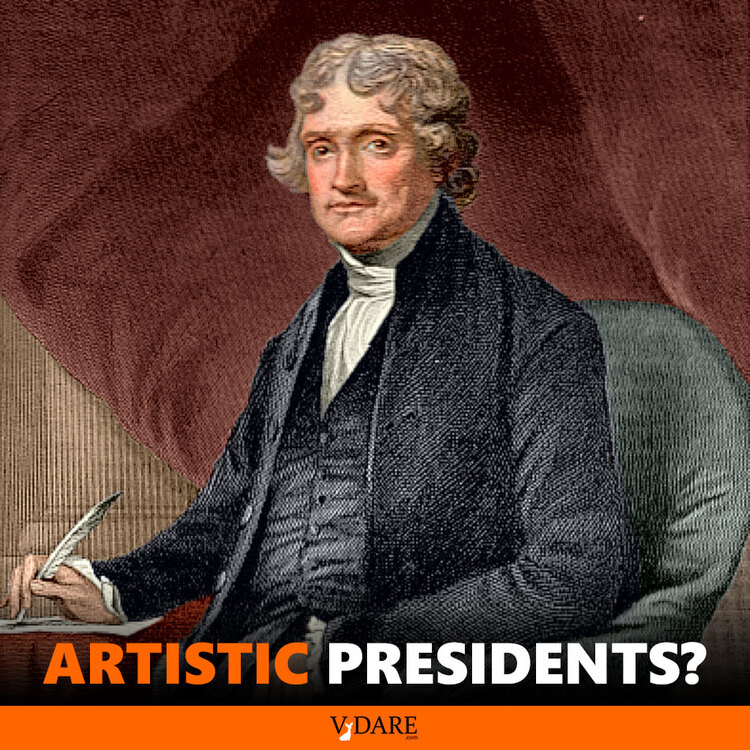


By Steve Sailer
03/26/2024
Presidents of the United States tend to be jocks rather than artists. How many Presidents have had strong artistic orientations, outside of rhetoric? Not many.
Jefferson was a fine, if impractical, architect (Monticello was a money pit: its octagon dome constantly leaked, so he could never afford to follow the enterprising Washington’s example and free his slaves in his will). He more or less invented the campus quad, a great American innovation in landscape architecture. (Oxford and Cambridge had lawns enclosed within college buildings, but Jefferson’s U. of Virginia was the second campus with multiple buildings around a big lawn, and it set a huge example.)
But we have to go back 215 years to Jefferson.
Lincoln was, at times, a master prose stylist, but his genius was of a lawyerly rather than imaginative or particularly aesthetic tendency.
Ronald Reagan was an actor, but the Gipper’s trademark role was as a jock, Notre Dame football player George Gipp:
I suppose you could argue that Teddy Roosevelt and Donald Trump were artists of personality, but that’s extending the concept pretty far.
In contrast, many Presidents have had athletic interests, as exemplified by the huge fraction going back to William Howard Taft who have, at some point in their adult lives, been enthusiastic golfers. Even guys who were pretty much over golf by the time they finally made it to the White House, like Reagan and Nixon, played enough in their early middle ages to claim decent 12 handicaps.
The last President to not be a golfer was 99-year-old Jimmy Carter. Before him, Harry Truman and Herbert Hoover were the only Presidents in the last 115 years to not play golf. They each won only one Presidential election.
Golf represents this weird counter-counterculture of conservative artistry obsessed with beauty that is divorced from the mainstream counterculture of the art world. Over the years, I have looked in perhaps a dozen bookstores devoted to the arts, such as in art museum gift shops, to see if they stock books about golf course architecture. So far I’ve found one, in the Third Street Mall in Santa Monica in the early 2000s, which devoted a couple of feet of shelf space to golf picture books.
So I’m not crazy to think it’s reasonable for golf course design to be treated as an art form, as a subdivision of the traditional art form of landscape architecture (André Le Nôtre, Capability Brown, Thomas Jefferson, Frederick Law Olmstead, et al.) — after all, one outstanding art bookstore agreed with me — but it doesn’t seem to come up much.
People interested in the latest developments in arts in general aren’t often interested in golf courses, and people interested in golf courses in particular aren’t often interested in the cutting edge of arts in general. I had dinner once with a rich art collector and his famous golf course architect at the golf club he had built in the most modern arts–crazed place in suburban America, the Hamptons on Long Island.
I was impressed and I wish him well. Building a bridge between the art world and golf world is a good thing and should be encouraged. But my friend, a member at an ancient and super fun club, said this gentleman’s modern art–inspired golf course was too difficult and austere for his tastes.
Which is reminiscent of much of modern art.